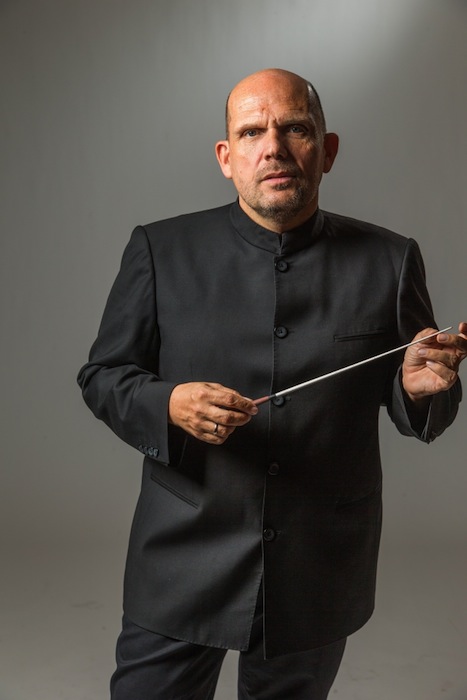Van Zweden goes long and deep in final Mahler program with Dallas Symphony

Jaap van Zweden conducted the Dallas Symphony Orchestra and Chorus in Mahler’s Symphony No. 2 Friday night.
Jaap van Zweden’s final Mahler performances as music director of the Dallas Symphony Orchestra began with a fortissimo barrage from the cellos and basses to open the Symphony No. 2 Friday night at Meyerson Symphony Center.
Yet this performance—with just under three hundred instrumentalists and singers onstage—was about much more than loud and jolting symphonic thunderbolts. This became apparent when, after the dark passion of the first theme, the lyrical second theme arrived in glowing lightness from the strings; thanks to van Zweden’s flawless pacing that became the dominant focus of the movement. The clarity of the conductor’s vision of the work was particularly evident in the return of the opening theme and the sense of inevitability he communicated in the restatement with full strings.
After ten years with the Dallas Symphony, the long opening movement also demonstrated the depth of van Zweden’s understanding, of the magnificent acoustic of the Meyerson Symphony Center, and his ability to shape Mahler’s inspired sound world within it. While Dallas music lovers clearly regret his eminent departure for the New York Philharmonic, van Zweden may well, for his part, miss the superior acoustic qualities of the Meyerson that have allowed him to produce moments of magnificent subtlety and power in his interpretations of Mahler’s symphonies and other late romantic works.
After the epic sonic collage of the first movement, the conductor must chase after a different sort of profundity in the minuet-like theme of the second movement, in which Mahler hearkens back to the era of Haydn and Mozart while frequently exploding into almost shocking post-Wagnerian episodes. Here, the high point arrived in the heavenly lucidity of a restatement of the minuet theme by harp and pizzicato strings. Once again, van Zweden’s flawless instinct for pacing balanced this movement’s contrasting material with the overall momentum of the symphony.
In the third movement, Mahler evokes the fluid, folk-like melodies of Dvorak and Smetana, occasionally detouring into more characteristically Mahlerian exclamations; van Zweden continued to masterfully weave these disparate elements together in the slowly emerging symphonic tapestry.
The fourth movement brings the first entrance of the voice—in this case Michelle DeYoung—as the mood shifts to a sort of sorrowful serenity, here brought forward with a gloriously rich, Wagnerian quality by the American mezzo-soprano. Mahler moves into his grandest romantic mode for the final movement, putting the conductor and orchestra through a series of sonic gestures (including sporadic placement of some instruments offstage for dramatic echo effects) before the final section’s choral pronouncements. In this slowly emerging apotheosis, German soprano Dorothea Roschmann’s voice rose magically from the general choral sound with soaring radiance; the Dallas Symphony Chorus whispered its first entrance with breathtaking intensity before arriving at its final proclamation of resurrection and eternal life, delivered with that ensemble’s characteristic precision and tidal wave of choral sound.
Besides its extraordinary complexity, Mahler’s Second offers gigantic interpretive challenges: Mahler had here not yet achieved the tightness of structure he would accomplish in his final symphonic works. Yet van Zweden built, note by note, and even in the slow passages, an irresistible forward momentum that made the 90-minute work pass as if in a few seconds.
The program will be repeated at 7:30 p.m. Saturday and at 2:30 p.m. Sunday at Meyerson Symphony Center. mydso.com; 214-692-0203.


